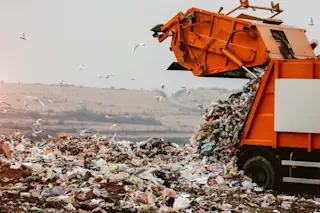Our planet holds a lot of trash. Since the Industrial Revolution, we humans have produced 30 trillion tons of stuff – from skyscrapers and bridges to clothes and plastic bags. Much of it is still with us in the form of waste.
Globally, people add 350 million tons to this total every day. What’s worse, much of the world’s garbage is mismanaged – dumped on land, in waterways and in open dumps in cities and towns. This exposes people to serious health risks. It harms plants and soil, and a lot of waste finds its way into the oceans. Thinking about what a mess we’re making can be pretty overwhelming.
Managing trash in the U.S. is big business.
Sending trash into space isn’t as off the wall as it might sound. After all, there’s a lot of room out there, with no one – as far as we know today ...














